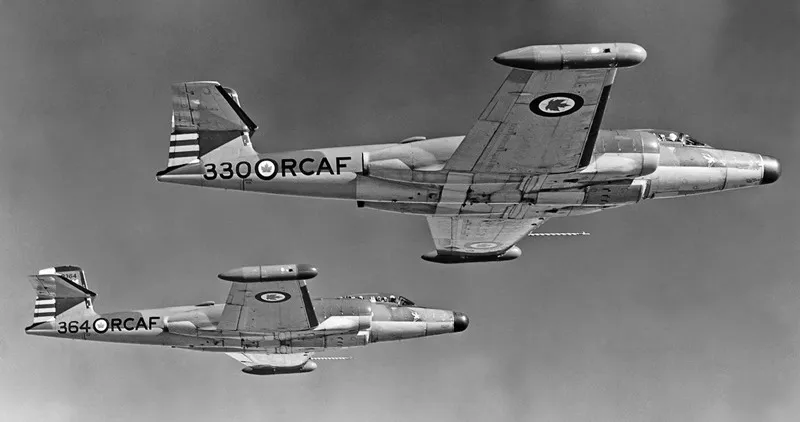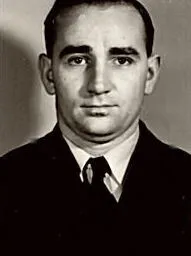(RCAF Photo)Avro CF-100 Canuck Mk. 4B (Serial No. 18330), and (Serial No. 18364), No. 423 Squadron, based at No. 2 (F) Wing, RCAF Station Grostenquin, France, 9 Oct 1962.
The Avro Canada CF-100 Canuck (affectionately known as the "Clunk") was a Canadian jet interceptor/fighter in service during the Cold War both in NATO bases in Europe and as part of NORAD. The CF-100 was the only Canadian-designed fighter to enter mass production, serving primarily with the RCAF and the Canadian Armed Forces, and also in small numbers in Belgium. For its day, the CF-100 featured a short takeoff run and high climb rate, making it well suited to its role as an interceptor.
Production consisted of 5 pre-production CF-100 Mk. 2 aircraft, 74 machine gun armed CF-100 Mk. 3 aircraft, 280 CF-100 Mk. 4 aircraft armed with both machine guns and rocket pods, and 331 CF-100 Mk. 5 aircraft armed only with rocket pods.Harold Skaarup web page
 Avro Canuck CF-100
Avro Canuck CF-100
 Wikipedia Avro Canuck
Wikipedia Avro Canuck
 Harold A. Skaarup Web Page
Harold A. Skaarup Web Page
CEPE Exporto Crede (Central Experimental and Proving Establishment)
 Archives Association of Ontario
Archives Association of Ontario
From the formation of the Air Board and the Canadian Air Force, test and development work was carried on at Ottawa Air Station (at Rockcliffe and Shirley's Bay). By 1930, a special Test Flight was established at Rockcliffe. Its purpose was to carry out investigations pertaining to flight testing, electronics, gunnery, navigation, and any aeronautical work that affected training. Due to the war, the demands for test flying for research and experiment increased and, as a result, the Test Flight was reorganized into the RCAF Test and Development Establishment in November 1940 and in 1946, its changed name to Experimental and Proving Establishment. Other experimental units such has the Winter Experimental Establishment were formed during and after the war. It was decided to centralize the control of their activities in one organization. On 1 September 1951 the Central Experimental and Proving Establishment was formed by the amalgamation of the E&PE at Rockciffe, the Winter Experimental Establishment at Edmonton, and the RCAF (National Research Council) Unit at Arnprior. Headquarters of CE&PE were at Rockcliffe, with detachments at several sites across Canada. In 1957 CE&PE was moved to RCAF Station Uplands, a move necessitated by the longer runways required for testing new jet aircraft.


 Canada
Canada

 Canadian Virtual War Memorial
Canadian Virtual War Memorial
 Avro Canuck CF-100
Avro Canuck CF-100 Wikipedia Avro Canuck
Wikipedia Avro Canuck Harold A. Skaarup Web Page
Harold A. Skaarup Web Page Archives Association of Ontario
Archives Association of Ontario